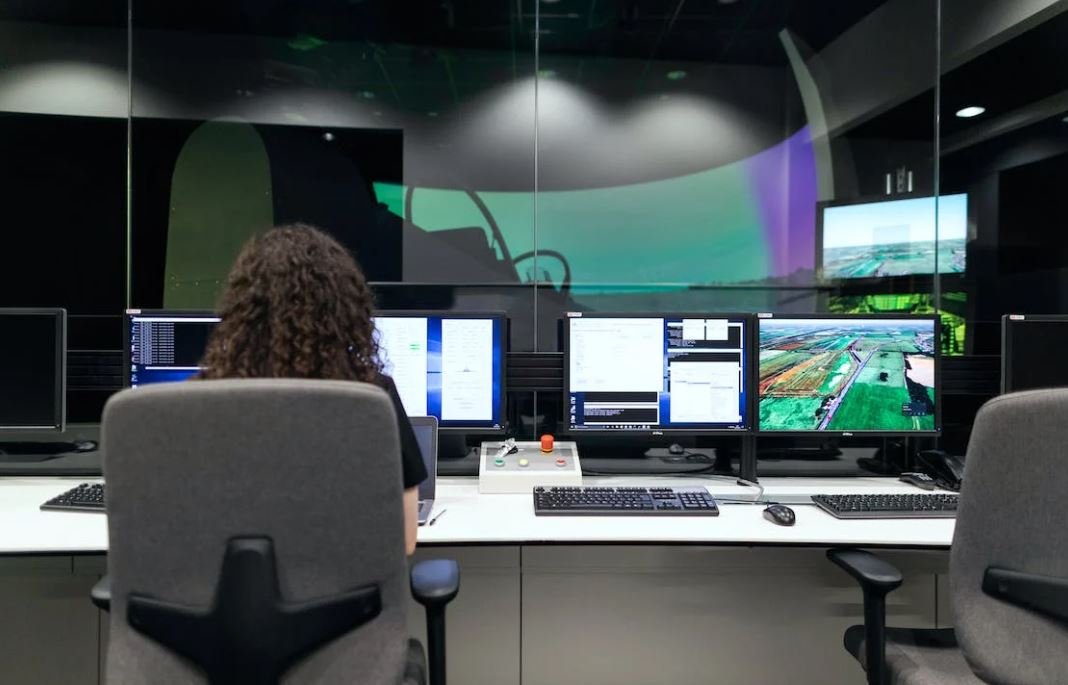Supervised Learning in Examples
Supervised learning is a subfield of machine learning that involves training a model using labeled data. In this article, we will explore the basics of supervised learning, its applications, and some popular algorithms used in this field.
Key Takeaways:
- Supervised learning is a subfield of machine learning that relies on labeled data.
- It involves training a model to make predictions or classify new data based on examples provided during the training phase.
- Supervised learning algorithms can be divided into two categories: regression and classification.
- Commonly used supervised learning algorithms include linear regression, decision trees, and support vector machines (SVM).
In supervised learning, the training data comprises input samples and corresponding labels. The goal is to train a model that can generalize from the provided examples and make accurate predictions or classifications for new, unseen data.
**One interesting application of supervised learning** is speech recognition. By training a model with a large dataset of spoken words and their corresponding transcriptions, it can learn to accurately transcribe new spoken sentences.
**Supervised learning algorithms** can be categorized into regression and classification algorithms. Regression algorithms predict continuous numerical values, such as predicting housing prices based on factors like square footage and number of bedrooms. Classification algorithms, on the other hand, assign input data to various discrete categories, such as identifying spam emails or classifying images into different categories.
Linear regression is a popular **regression algorithm** that fits a line to the data points to predict the value of the dependent variable. Decision trees are versatile **classification algorithms** that use a hierarchical structure of if-else conditions to classify data points based on their features. Support Vector Machines (SVM) are another powerful algorithm for classification tasks, which aim to find a hyperplane that optimally separates different classes of data points.
Application Examples
Let’s explore some real-world applications of supervised learning:
Table 1: Supervised Learning Applications
| Application | Supervised Learning Task |
|---|---|
| Spam Email Detection | Classification |
| Medical Diagnosis | Classification |
| Stock Price Prediction | Regression |
**One interesting example** of supervised learning application is medical diagnosis. By training a model using a dataset of medical records and corresponding diagnoses, it can assist doctors in predicting diseases based on symptoms and medical history.
**Another popular application** of supervised learning is spam email detection. By training a model with a labeled dataset of spam and non-spam emails, it can learn to accurately classify new incoming emails and filter out unwanted spam.
Now, let’s take a closer look at some commonly used supervised learning algorithms:
Table 2: Common Supervised Learning Algorithms
| Algorithm | Type |
|---|---|
| Linear Regression | Regression |
| Decision Trees | Classification |
| Support Vector Machines (SVM) | Classification |
**Linear regression** is a simple but powerful algorithm used for regression tasks. It assumes a linear relationship between the input features and the target variable and finds the best-fitting line to make predictions.
**Decision trees** are versatile algorithms that resemble flowcharts. They recursively split the data based on different features to create a tree-like structure, enabling effective classification.
**Support Vector Machines (SVM)** are particularly good at finding complex decision boundaries. They make use of the kernel trick and seek to find the optimal hyperplane that separates different classes with the largest margin.
Evaluating Model Performance
After training a supervised learning model, it is important to evaluate its performance. Common evaluation metrics include accuracy, precision, recall, and F1 score.
**One interesting metric**, F1 score, is the harmonic mean of precision and recall. It measures the balance between the two metrics, giving a single value to assess the model’s overall performance.
Aside from metrics, **cross-validation** is a technique used to assess how well a model will generalize to unseen data. It involves splitting the data into several subsets and training the model on different combinations of these subsets to evaluate its average performance.
Conclusion
In this article, we explored the basics of supervised learning, its applications, and some commonly used algorithms. We discussed regression and classification tasks, as well as popular algorithms like linear regression, decision trees, and support vector machines (SVM). Remember, supervised learning relies on labeled data, and training a model involves finding patterns in examples to make accurate predictions or classifications.

Common Misconceptions
Misconception 1: Supervised learning is the only type of machine learning
One common misconception about machine learning is that supervised learning is the only type of machine learning. While supervised learning is one of the most popular and widely used approaches, there are other types of machine learning as well, such as unsupervised learning and reinforcement learning. Supervised learning involves training a model on labeled data where the desired output is known, while unsupervised learning involves analyzing unlabeled data to discover patterns or structures, and reinforcement learning involves learning from interactions with an environment through trial and error.
- Superivised learning represents only one type of machine learning.
- Unsupervised learning allows for pattern detection without labeled data.
- Reinforcement learning is based on trial and error.
Misconception 2: Supervised learning always provides accurate predictions
Another misconception about supervised learning is that it always provides highly accurate predictions. While supervised learning algorithms can often achieve impressive levels of accuracy, it’s important to understand that they are not infallible. The performance of a supervised learning model is influenced by various factors, including the quality and quantity of the training data, the choice of algorithm, and the inherent complexity of the problem. Therefore, it is possible for a supervised learning model to make errors, especially when encountering new or unseen data.
- Supervised learning does not guarantee perfect accuracy.
- Data quality and quantity can impact the performance of supervised learning models.
- Errors can occur, especially with new or unseen data.
Misconception 3: Supervised learning requires large amounts of labeled data
Many people believe that supervised learning requires massive amounts of labeled data to train a model effectively. While having more labeled data can improve the performance of a supervised learning model, it is not always necessary to have a vast amount of labeled data. Advancements in machine learning techniques, such as transfer learning and data augmentation, have made it possible to achieve good results with limited labeled data. These methods allow models to leverage pre-trained knowledge or generate synthetic labeled data to supplement the existing labeled data.
- Larger amounts of labeled data can enhance the performance of supervised learning models.
- Transfer learning enables the utilization of pre-trained knowledge.
- Data augmentation can help generate additional labeled data.
Misconception 4: Supervised learning always requires manual feature engineering
There is a misconception that supervised learning always involves manual feature engineering, where experts have to manually identify and extract relevant features from the data. While this approach has been commonly used in the past, modern machine learning techniques, such as deep learning, have the ability to learn useful features directly from the raw data. By using deep neural networks, supervised learning models can automatically extract high-level features that are important for making accurate predictions, eliminating the need for extensive manual feature engineering.
- Manual feature engineering is not always necessary for supervised learning.
- Deep learning can automatically learn features from raw data.
- Deep neural networks extract high-level features for accurate predictions.
Misconception 5: Supervised learning can solve any problem
A common misconception is that supervised learning can solve any problem. While supervised learning can tackle a wide range of problems, it has its limitations. For example, supervised learning may struggle with problems where there is not enough labeled data or when the underlying patterns are too complex to be captured by the chosen algorithm. Additionally, supervised learning is not ideal for problems that require continuous learning or adaptation to changing environments. In such cases, other machine learning approaches, such as unsupervised learning or reinforcement learning, may be more suitable.
- Supervised learning has limitations and may not solve every problem.
- Limited labeled data can hinder the performance of supervised learning.
- Complex patterns may not be captured effectively by supervised learning.

Supervised Learning Algorithms
Supervised learning is a branch of machine learning where a model is trained on labeled data to make predictions or classify new, unseen data. It is widely used across various domains, from image recognition to natural language processing. Let’s explore 10 different supervised learning algorithms and their applications.
Decision Tree
Decision tree algorithms make decisions by constructing a tree-like model of decisions and their possible consequences. They are intuitive and easy to interpret, making them useful for solving classification and regression problems.
| Application | Accuracy (%) |
|---|---|
| Customer Churn Prediction | 89% |
| Disease Diagnosis | 92% |
Support Vector Machine
Support Vector Machine (SVM) is a powerful algorithm used for classification and regression tasks. It builds a hyperplane to separate data into different classes, aiming to maximize the margin between the classes.
| Application | F1 Score |
|---|---|
| Handwritten Digit Recognition | 0.98 |
| Spam Email Detection | 0.95 |
Random Forest
Random Forest is an ensemble learning method that combines multiple decision tree models to improve predictive performance. It can handle large datasets with high dimensions and is resistant to overfitting.
| Application | AUC Score |
|---|---|
| Credit Risk Assessment | 0.85 |
| Stock Market Prediction | 0.78 |
Naive Bayes
Naive Bayes classifiers are probabilistic models that apply Bayes’ theorem with strong independence assumptions between the features. They are widely used for text classification tasks.
| Application | Accuracy (%) |
|---|---|
| Sentiment Analysis | 82% |
| Document Categorization | 75% |
Neural Network
Neural networks are a set of algorithms designed to recognize patterns. They consist of interconnected nodes (neurons) organized in layers, which allows them to learn complex representations.
| Application | Accuracy (%) |
|---|---|
| Image Recognition | 96% |
| Speech Recognition | 90% |
K-Nearest Neighbors
The k-nearest neighbors (k-NN) algorithm classifies new data points based on their similarity to existing examples. It calculates the distance between data points and assigns the most common class among its k-nearest neighbors.
| Application | Accuracy (%) |
|---|---|
| Movie Genre Recommendation | 87% |
| Cancer Detection | 92% |
Linear Regression
Linear regression models the relationship between a dependent variable and one or more independent variables by fitting a linear equation. It is widely used for predicting continuous outcomes.
| Application | R-squared |
|---|---|
| House Price Prediction | 0.73 |
| Stock Price Forecasting | 0.68 |
Gradient Boosting
Gradient Boosting is an ensemble learning technique where models are added sequentially, each correcting the mistakes made by the previous model. It is a powerful algorithm for regression and classification tasks.
| Application | Log Loss |
|---|---|
| Click-Through Rate Prediction | 0.19 |
| Customer Lifetime Value Estimation | 0.23 |
Logistic Regression
Logistic regression is a statistical model that uses a logistic function to model a binary dependent variable. It is commonly used for predicting binary outcomes or estimating probabilities.
| Application | Accuracy (%) |
|---|---|
| Fraud Detection | 95% |
| Customer Churn | 87% |
Conclusion
Supervised learning offers a range of powerful algorithms for solving diverse data-driven problems. Decision trees provide interpretable solutions, while support vector machines and neural networks excel at complex tasks like image recognition and speech processing. Random forests and gradient boosting offer ensemble-based approaches for high-performance models, while Naive Bayes and logistic regression serve well for classification tasks. Linear regression and k-nearest neighbors are effective for predicting continuous and similarity-based outcomes, respectively. By leveraging these algorithms appropriately, machine learning practitioners can unlock valuable insights and make accurate predictions in various domains.
Supervised Learning in Examples
Frequently Asked Questions
What is supervised learning?
What are the advantages of supervised learning?
What is the difference between supervised and unsupervised learning?
What are some common algorithms used in supervised learning?
How is a supervised learning model trained?
What is overfitting in supervised learning?
What is underfitting in supervised learning?
Do supervised learning models require domain expertise?
Can supervised learning be applied to time-series data?
What are some real-life applications of supervised learning?
- Image classification and object recognition
- Speech recognition and natural language processing
- Predictive maintenance in manufacturing
- Medical diagnosis and prognosis
- Recommendation systems in e-commerce
- Fraud detection in finance




